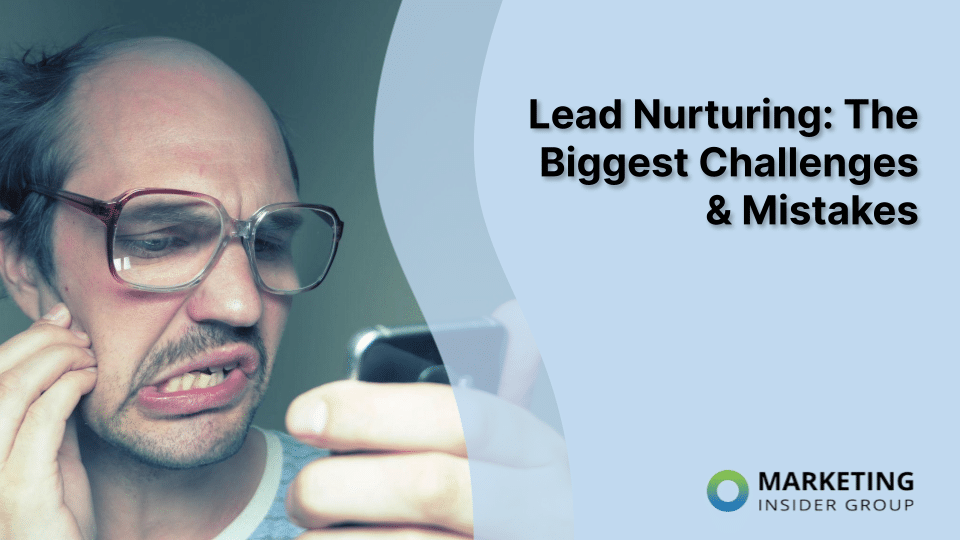
Lead Nurturing: The Biggest Challenges & Mistakes
Are you drowning in articles telling you to nurture your qualified leads? Perhaps you’ve grown weary of all the advice you’ve been hearing about how to get your prospects moving faster along the sales funnel?
Strategies about how to attract and grow your leads often vary depending on who you’re talking to. Sometimes it involves complicated steps, mind-reading powers, a certain amount of creativity, as well as really good timing.
Key Takeaways:
- Analytics are your friend! Don’t ignore the power they hold, no matter how daunting the task may be.
- Personalization is key in many aspects of your lead generation. From sending email to creating content, your prospective customers want to feel special.
- Stretch your content and research as far as you can in every direction. Syndicate your content and make sure you find the right channels to distribute your message.
What Is Lead Nurturing Anyway?
Lead nurturing is the process of sending relevant content to your leads. As they continue through the process, they are driven down your sales funnel to the point where they’re ready to make a purchase decision. Through lead nurturing, you’re presented with the opportunity to convince a prospect of the value of your offering.
Lead nurturing is a key strategy in driving prospective customers towards a purchase decision. When done right, it can eventually turn prospects into loyal customers who will contribute to sustainable revenue for the long run.
While they might not be customers from the get-go, prospects turn into warm leads faster if you invest the time and effort to communicate regularly after their first contact.
A good lead nurturing program has the following:
- A clear goal and target audience
- Personalized content
- Multiple touches mapped to a timeline based on your sales cycle
- A method for measurement and improvement
- Sales and Marketing alignment
Technology has allowed marketers to scale their lead nurturing campaigns with readily available automation tools and easy-to-use CRM software. These are effective instruments for delivering the right message at the right time to qualified leads, making it easier to drive leads through your sales funnel.
Of course, attracting potential buyers is only the beginning. Remember that for a lead to be considered successful, it must ultimately turn into a sale. To get there, you’ll need to be proactive about nurturing each step in the sales conversion process.
While it is necessary to develop a lead nurturing campaign to keep your business top-of-mind for your prospects, there are some significant challenges to doing so.
Challenges of Lead Nurturing
When it comes to lead generation, it’s surprisingly easy to drop the ball. And once that ball is dropped, it gets a whole lot harder to get back on track.
1. Determining Lead Nurturing Timeframes
What is the right timeframe for launching your lead nurturing efforts? Continuing long after a lead has turned cold can be detrimental but giving up too soon to raise interest may cut loose leads that simply needed a bit more time.
While there’s no cut and dried answer to determine a precise timeline, you can come up with the best answer by determining your average customer’s buying cycle. Find out how long it takes for your leads to become customers by monitoring their movement from the top of the sales funnel down to the time they convert into customers.
For example, if the buying cycle typically averages four months from lead to sale, then that’s the amount of time you should allot to your lead nurturing campaign. You need to adjust timing and messaging based on a prospect’s stage in the sales funnel.
2. Figuring Out How Often to Contact Leads
How frequently should you send an email or call your leads? As a general rule of thumb, most businesses tend to make more frequent, educational offers to leads at the top of the sales funnel.
At this stage, the barriers to consumption are quite low, so emails are generally well received especially if the content you send successfully resonates with your target audience. New prospects will appreciate any valuable, engaging content, which helps to increase awareness and trust in your brand. But don’t overdo it. Communication frequency should decrease as time goes on.
Once new prospects move to the middle of the sales funnel, the content you share will require more of their commitment, so it’s better to taper your offers to avoid overwhelming them. Instead, send more personalized, specific, highly relevant offers like blog posts, webinars, or any other content that will accelerate their movement along the sales funnel.
3. Determining What Type of Content or Offers are Appropriate
The type will vary depending on your audience, and one way to discover what works is to go back to your buyer’s journey and identify any gaps in your current content offers. For example, you might have too many top-of-the-funnel educational-type offers and not enough industry-specific webinars for marketing qualified leads. Adjust your content offers based on the results and update any stale content that fails to resonate with your target audience.
Going back to Demand Gen’s Benchmark Study, respondents said that the types of content that most leads respond favorably to are research-based, with 69% saying that whitepapers are effective offers that yield positive results. 61% also said that thought leadership articles and webinars also work well.
Let’s not forget about the most effective channels for sharing your content. Email remains the most popular (94% usage) and 43% use re-targeting and telemarketing as well.
4. Proper Tracking and Monitoring of Lead Nurturing Results
After all the effort that goes into capturing and nurturing prospects, it’s tempting to keep launching new lead generation campaigns without combing through your old campaign’s overall results. While it’s not wrong to do so, it’s also a missed opportunity to learn from your mistakes or to learn first-hand what best practices to adopt for your next campaign.
You can use a simple Excel file for tracking or a full-fledged analytics software program for monitoring results in detail. Whatever tools you end up utilizing, use them to map out the buying journey, identify leads that dropped out, and monitor KPI’s such as click-through, conversion, and engagement rates. These are some of the elements you should track to determine the success of a campaign and inform your decisions for future lead nurturing efforts.
Lead Nurturing Mistakes
B2B companies are still making glaringly obvious lead nurturing mistakes. The worst part is that these mistakes are usually pretty easy to avoid. Whatever type of marketer you are, this much is clear: Acquiring leads is hard, but losing them is easy. If you need reminding about what NOT to do when it comes to lead nurturing, here’s a list for you to consider.
1. Lack of Communication with Buyers
On average, it takes about ten touches—or points of contact—for leads to turn into sales, but that still depends on the type of your business and your sales cycle.
Aside from ensuring engagement with touchpoints, you can also structure contacts with the help of lead nurturing in stages. For example, starting new connections off with general educational information to attract, then move onto more detailed information about your products or services as you nurture them towards a purchase decision.
2. Generic Instead of Targeted Lead Nurturing
Every person is unique and undergoes different struggles, and leads are no different. You want to address each one’s unique challenges to let them know that you understand their situation and want to help them.
Personalization goes a long way when nurturing your leads. Your content should address their specific concerns, needs, or recent actions. For example, if someone downloads content on your website, send them an email reflecting what they did and suggest guidelines for their next steps.
To help with personalized and targeted content, start by creating unique buyer personas or fictionalized representations of your key market segments based on similar demographic and psychographic characteristics. Based on that buyer persona, you can create nurturing lists so that you can tailor your emails and content based on product interest, job title, location, etc.
3. Creating “Good Enough” Content
Nowadays, passable content is not going to cut it. As the cornerstone of lead nurturing, content should address your leads’ questions. So naturally, businesses are increasing their content creation efforts.
A “good enough” piece of content isn’t going to earn your leads’ trust and will most likely be second-rate (or worse) when compared to easily accessible alternatives.
4. Not Using Behavioral Targeting
The word dynamic refers to “constant change, activity, or progress,” and in lead nurturing, dynamically sending targeted content helps marketers adapt to the ever-changing B2B landscape.
Triggered emails are the most common example of behavioral targeting and are usually done via a marketing automation system in response to a lead’s behavior on your website or social channels.
This method pulls together the triad of email marketing: sending the right content to the right person at the right time.
While it’s not complicated to write triggered emails, it is hard work to set up the triggers throughout your nurturing campaign. Consider first which set of actions should lead to a trigger email; for example, viewing specific articles.
5. Not Providing Supplemental Content
If a lead visits your site and downloads an eBook, chances are they’re relevant to your target market. That means they’ll be able to extract value out of your other content as well (because we create content specifically for our target markets).
Don’t let the lead settle for a single content offer before forgetting about you. Include supplemental content based on what they’d consumed before. The more positive touchpoints you can bring to the table, the higher your chances of conversion.
6. Dragging Your Feet When Responding to Client Questions
Why respond in a timely manner when you can ignore the question until it goes away, right? Although that might have worked in your dating life, it’s no way to sell your business.
The acceptable window of time for responses has become faster—thanks to social media, but in general, you should make sure to respond as soon as possible. Leave it for too long and you’re bound to lose that particular lead.
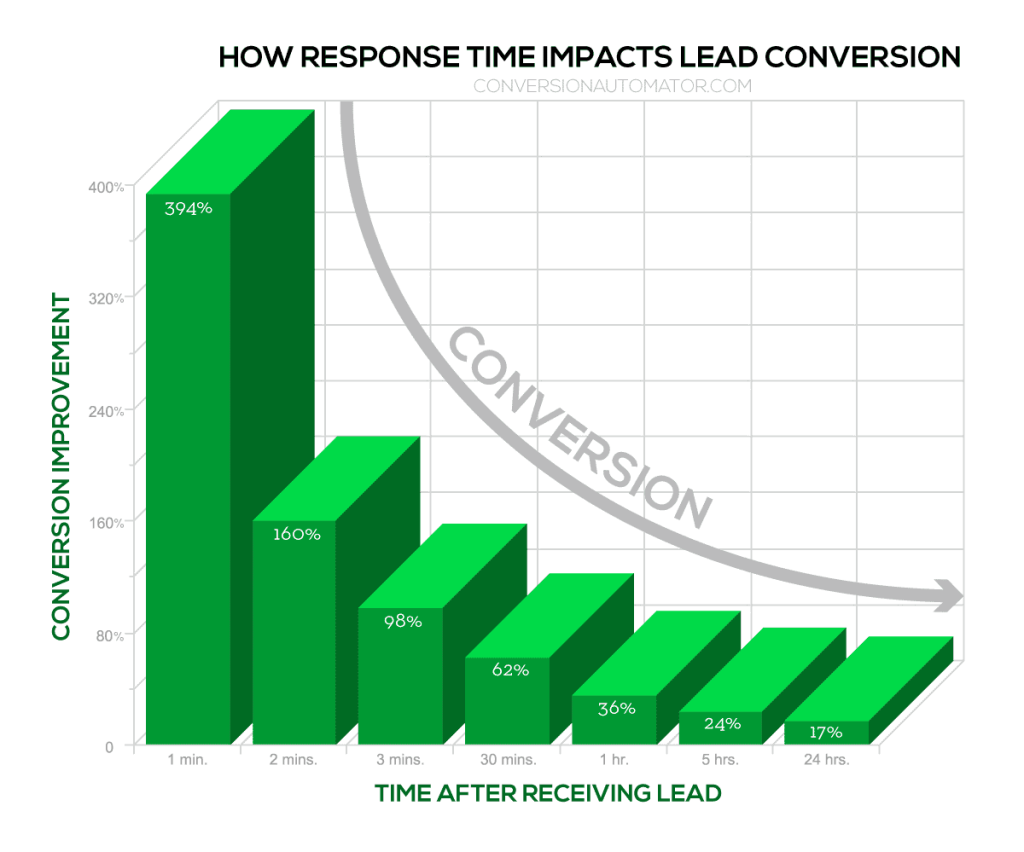
Inside Sales conducted a lead management study revealing that the odds of qualifying a lead in 5 minutes versus 10 minutes decreased 4 times. As you can see in the graph above, the decline is dramatic after just 30 minutes. The same study also showed that only 16% of companies respond within 24 hours. Even worse is if the prospects are the ones reaching out.
Lead nurturing must be a proactive approach to achieve top-of-funnel prospects. The faster you reply to new leads, the greater your chances of them turning into sales. There’s no denying the fact that time is of the essence, so don’t let it go to waste. Time is money!
7. Not Letting Sales Sell
Marketing automation platforms can provide dynamic, relevant content to leads for nurturing, but it’s still the sales team’s job to seal the deal.
Every seller must have the knowledge, skills, and behavior needed to do just that, but they also need to be aligned with your company’s lead nurturing process. Without this sync, leads will continue to receive emails from the automation system when a sales rep should already be talking to them.
Nurture leads with excellent content, convince them to talk with your sales rep, and then let the sales rep do his/her work. This also entails sending some great content along with the personal email, too. Automation is great, but it should always support one-to-one conversations, not relieve the need for them.
8. Not Optimizing Lead Scoring with Conversion Metrics
Lead scoring is a way to rank prospects against a scale that represents the perceived value of each opportunity. This is usually done by assigning numeric values to specific behaviors, conversion events, or social media interactions. The resulting score then determines which leads should be prioritized for follow up by a sales rep and which leads need to be nurtured further.
Lead scoring is a hypothesis, which means each point for an action is just an educated guess. Work with sales to adjust the scoring logic after you have developed a baseline and aim to continuously improve things to optimize your lead qualification process.
A basic equation that tracks conversions from Marketing Qualified Leads (MQLs) to Customers can help come up with a baseline to know if your lead scoring is working. This reads as (# of MQLs sent to sales) / (# of customers closed from MQLs).
If the percentage is too low, readjust the way you score leads. Despite a respectable conversion rate, remember to look for any areas that you can improve.
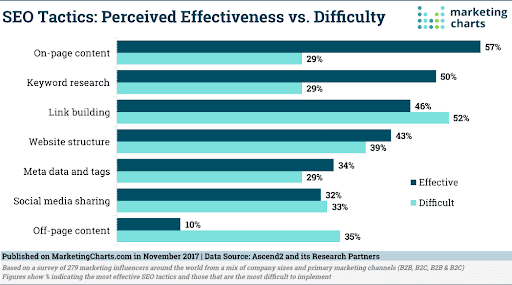
9. Not Doing Your Research
Yes, it takes considerable time and effort to identify your target audience, but it will be worth it in the long run. Identifying your ideal customer means that you’re not working blindly. It helps you avoid mistakes and wasting valuable resources by trying to communicate to an audience that you don’t know or understand.
Avoid this common misstep by doing your due diligence through research. There are many tools and software that you can use to observe customer behavior, many of which are free. So, there’s no excuse for not knowing your audience like the back of your hand. Find out what their pain points are and figure out what you can do to solve their problems. Armed with this knowledge, your product offer can prove itself to be the best solution for their most pressing issues.
10. Failing to Map Content to the Sales Funnel
If you’ve researched your target audience and created a buyer persona, you should have enough insight to come up with an effective lead magnet. Use it to create an irresistible offer or valuable piece of content that they can’t help but accept.
Start by identifying and solving a pain point that your buyer persona is having. Share relevant content that solves their problems on a regular basis and put them in highly visible places (which could be your website, landing pages, social media accounts, email network, or any other platforms your audience frequents). Don’t forget to conduct A/B tests on a regular basis and tweak your approaches accordingly.
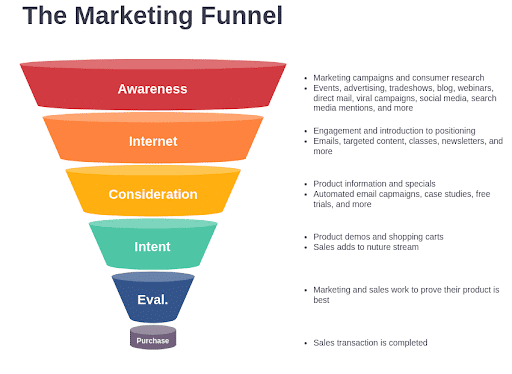
11. Ignoring Your Leaky Sales Funnel
Allowing your leads to fall through the cracks due to a faulty process is not just a waste of time, but a serious waste of money.
Having a leaky sales funnel is a lot like having a Harley with a leaky gas tank. You might look great and imposing on the outside, but you won’t get far no matter how many times you keep filling it up with gas.
Start with the basics: address inefficiencies in your sales funnel that might be causing prospects to duck out of the buying cycle. Use the power of analytics!
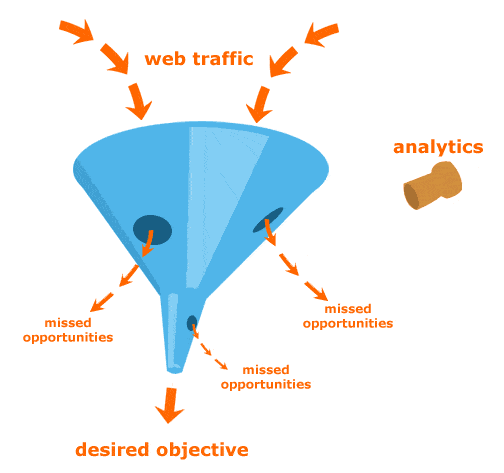
After putting your resources into attracting those leads, you don’t want to waste the opportunity by letting them slip away.
12. Consistently being Inconsistent
Imagine you set up a new blog post and tell your readers they’ll be getting a weekly newsletter. And then, you don’t keep up with what you promised.
Say you post a daily update on your Facebook account for two weeks and then stop without explanation. You don’t explain why you’ve been away, or what else to expect from you.
Do this consistently for months at a time, and watch your leads dwindle to a trickle until you’re left with practically nothing.
Trust is everything, and your prospective customers expect a degree of regularity from your brand so not living up to that is a surefire way to get on their bad side.
13. Always Going for the Hard Sell
There are times when following up with clients is called for, especially when you’ve established a relationship to the point where they’re very close to converting. But, in the beginning stages, it’s best not to go for the hard sell.
If you continue to pester your leads without first trying to figure out what they really need, there’s a high chance that they’ll get annoyed and potentially move on to a less aggressive competitor.
14. Being Unresponsive on Social Media
Most businesses nowadays integrate their social media management system with their CRM platform. It allows marketers to monitor the conversations about their brands. But, you must optimize this system by acting in a timely manner whenever you get a mention.
Your audience on social media will tend to be more active and demanding when it comes to interacting with brands. Not to mention pretty much everything you do on social media is publicly visible. This makes your social media platforms a great tool for audience engagement as well as disengagement.
15. Sending the Same Generic Email to Everyone on Your List
If you’re still sending the same email to every single one of your leads, now’s the time to change.
There are so many targeting tools you can use to create powerful, personalized emails that are far more likely to resonate with your leads based on their demographics, preferences, and personal profiles. And with automation services that basically do the work for you, there’s really no excuse.
Email marketing remains the lead generation channel with the highest ROI, so make sure that you maximize your use of this tool and properly segment your emails for enhanced accuracy.
16. Making Assumptions and Not Asking Questions
It’s easier to launch your campaign blindly without having to ask questions, but this is a fatal mistake. You need to proactively find out what your target audience really wants.
Let them open up to you about their pain points and preferences. Then use this information to craft more personalized and helpful outreach initiatives. Drum up more inbound leads by creating content that your customers can use.
Aside from discovering feedback that you can use to inform your campaign, the very act of reaching out to clients is an opportunity for you to build trust, make a connection, and create a foundation to form a solid partnership that’s bound to last a long time—increasing the lifetime value of the lead.
17. Disregarding Customer Personas
Taking the time to create solid personas enables you to view your leads as actual people, not just numbers in your lead acquisition efforts. It gives you a better grasp of how to handle your campaign and what types of content and material they are most likely to respond favorably to.
Ignoring your personas is similar to giving a presentation without knowing who your audience is. Make sure you know who you’re talking to because if you try talking to everyone, you’ll end up shouting in an empty room.
18. Publishing Sub-Par Content
If you don’t make an effort to create content marketing material that will either entertain or educate your prospects, then you’re on your way to losing them—one lousy blog post at a time.
You need to share materials that your target audience will find valuable. This includes content that will help them make informed decisions as to why they should continue doing business with you.
19. Failing to Follow Up
Once you’ve segmented your leads and identified those who have expressed interest in your product, don’t leave them hanging. Initiate contact and reach out to them as soon as possible. Chances are, they might not be ready to buy right this instant, but circumstances might change in the future.
Follow up with them and remind them why they became interested in the first place. It’s a wasted sales opportunity not to do so, yet up to 50% of marketers fail to follow up with leads who expressed initial interest.
Responding fast is key; a Harvard Business Review study showed that following up with leads within an hour means that they are up to 7 times more likely to convert. Use notification alert software to remind you to follow up with and get in touch with specific leads.
20. Believing that If You Build It, They Will Come
The first part of any lead generation plan is producing the marketing material. Having said that, unless your material has innate shareability, you’re going to need to help put it in front of the right people.
Effective distribution is critical to the success of any marketing strategy so no matter how good your content is, make sure that you’re utilizing the right channels to deliver it to your audience.
People are being overwhelmed with competing content, so if you aren’t making your message easy to discover, it will simply go unnoticed.
At least now you know what not to do!
Tack this on your workstation or put it in a prominent place if you need reminding. There are thousands of conflicting strategies out there and sometimes, knowing what NOT to do is an easier way to keep yourself on track.
Make Lead Nurturing Work for You
Many studies have proven the success of lead nurturing programs. Such programs are also useful when it comes to segmenting and identifying leads in the various stages of the sales funnel. Competition is fierce, and customers have individualized needs. Remember to stand out from the rest by optimizing your lead nurturing strategy to focus more on your best leads and less on your worst.
The ability to successfully convert leads into customers is largely determined by how well you know your prospects and what you do based on this knowledge. Monitoring and tracking progress can only be as effective as what you decide to do with the results. You need to be proactive and respond to what your KPIs are telling you by updating your approach, leveraging what works, and avoiding what doesn’t.
Do you see yourself in any of the situations we talked about? Then it’s time for a change, and maybe that means stepping up your content marketing to support your inbound lead generation. Check out our SEO Blog Writing Services or schedule a free consultation to learn more about developing a solid content marketing strategy.






